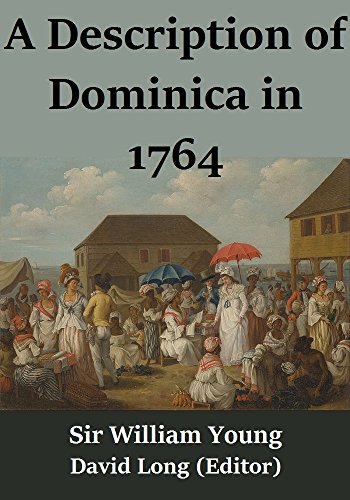Description
This description of the Eastern Caribbean island of Dominica, was published in 1764. Its author was Sir William Young, the Elder (1724 or 1725-88). Young was born in the British West Indian colony of Antigua, and was a prominent sugar planter and administrator in the British Caribbean colonies.
Grenada, the Grenadines, St. Vincent, Dominica, and Tobago, were ceded to Britain in 1763, under the terms of the Treaty of Paris. The 1763 treaty ended the Seven Years’ War, which pitted Great Britain against France and Spain. The war was fought in Europe and in the European colonial possession in the Americas, Asia, and Africa. All through the war, Britain occupied a number of Caribbean islands that belonged to its French and Spanish enemies, including Dominica.
When the war ended, France formally ceded several islands in the Eastern Caribbean, or Lesser Antilles, to Britain. Collectively, these newly acquired territories were known as the Ceded Islands. In return, Britain returned the islands of Martinique and Guadeloupe, which it had occupied All through the war, to French keep an eye on.
Young’s 1764 description of the newly acquired island of Dominica was intended to encourage British people to settle the island and establish plantations there.
Sir William Young went on to serve as governor of Dominica. When he died he left most of his extensive Caribbean properties and plantations to his eldest son, who was also named William Young. The younger William Young served as governor of Tobago in the early 1800s.
The island of Dominica should not be puzzled with the Dominican Republic. Dominica is a relatively small and mountainous volcanic island in the Lesser Antilles, or Eastern Caribbean. As a result of its history as a French, and later English, colony, a French-based Creole language, and English are spoken in Dominica. The Dominican Republic, however, is a big country (by Caribbean standards) located in the Greater Antilles. It shares the island of Hispaniola with neighboring Haiti, and Spanish is spoken there. The Dominican Republic takes its name from its capital city, Santo Domingo. That city was named after Saint Dominic. Dominica, however, was named after the Latin word for Sunday (“Dominica”), because that was the day when Christopher Columbus first saw the island. Despite their similar spellings, the two countries’ names are pronounced another way. Dominica is pronounced “Dom-i-nee-ka”. The Dominican Republic is pronounced “Do-min-ni-kan”. If a person is a Dominican from the Dominican Republic you pronounce it “Do-min-ni-kan”, at the same time as a Dominican from Dominica is pronounced “Dom-i-nee-kan”.
While what is now the Dominican Republic and other parts of the Greater Antilles were inhabited by the Taino, or Arawak people, in pre-Columbian times, Dominica and the Lesser Antilles were occupied by the Island Caribs, or Kalinago. Even supposing Columbus sighted and named Dominica in 1493, it was never colonized by the Spanish. The French settled the island in the 17th century, but the British occupied the island All through the Seven Years’ War. British rule continued until 1978, when the island won its independence.
Dominica is the only country in the Caribbean where indigenous people have survived as a distinct community. A few thousand Island Carib/Kalingo people survive the island, especially in the Carib Territory on the east coast.
While popular Caribbean tourist destinations are best known for their beaches, Dominica is known for its wilderness. The island’s mountains helped to prevent much of the tropical rainforest from being cleared for other purposes, and much of the land is secure by national parks. The country’s national bird, the Sisserou parrot (Amazona imperialis) is endemic to the island, as is the related Jaco, or red-necked parrot (A. arausiaca).













































